PROTECT YOUR DNA WITH QUANTUM TECHNOLOGY
Orgo-Life the new way to the future Advertising by AdpathwayTomatoes need consistent care throughout the growing season. During August, you’ll see your efforts pay off as green fruits ripen to yellow, red, and striped patterns.
This month is a great time to take stock of your tomatoes to see if they need anything. Give them water, fertilizer, and support, and watch them closely to ensure no pests or diseases appear.
For most gardeners, all you’ll have to do is water and harvest! Save those tomatoes from hungry worms and insects and bring them inside for fresh eating.
Whether you’re growing cherry tomatoes like ‘Yellow Pear,’ giant slicers like ‘Red Pride,’ or bulging heirlooms like ‘Pink Berkeley Tie Dye,’ these August tomato care tasks will help you tend to your fruiting crops.
Red & Yellow Pear Blend

Red & Yellow Pear Blend Pole Cherry Tomato Seeds

Red Pride Bush Tomato Seeds
Cherokee Purple

Cherokee Purple Pole Tomato Seeds
Harvest Tomatoes!
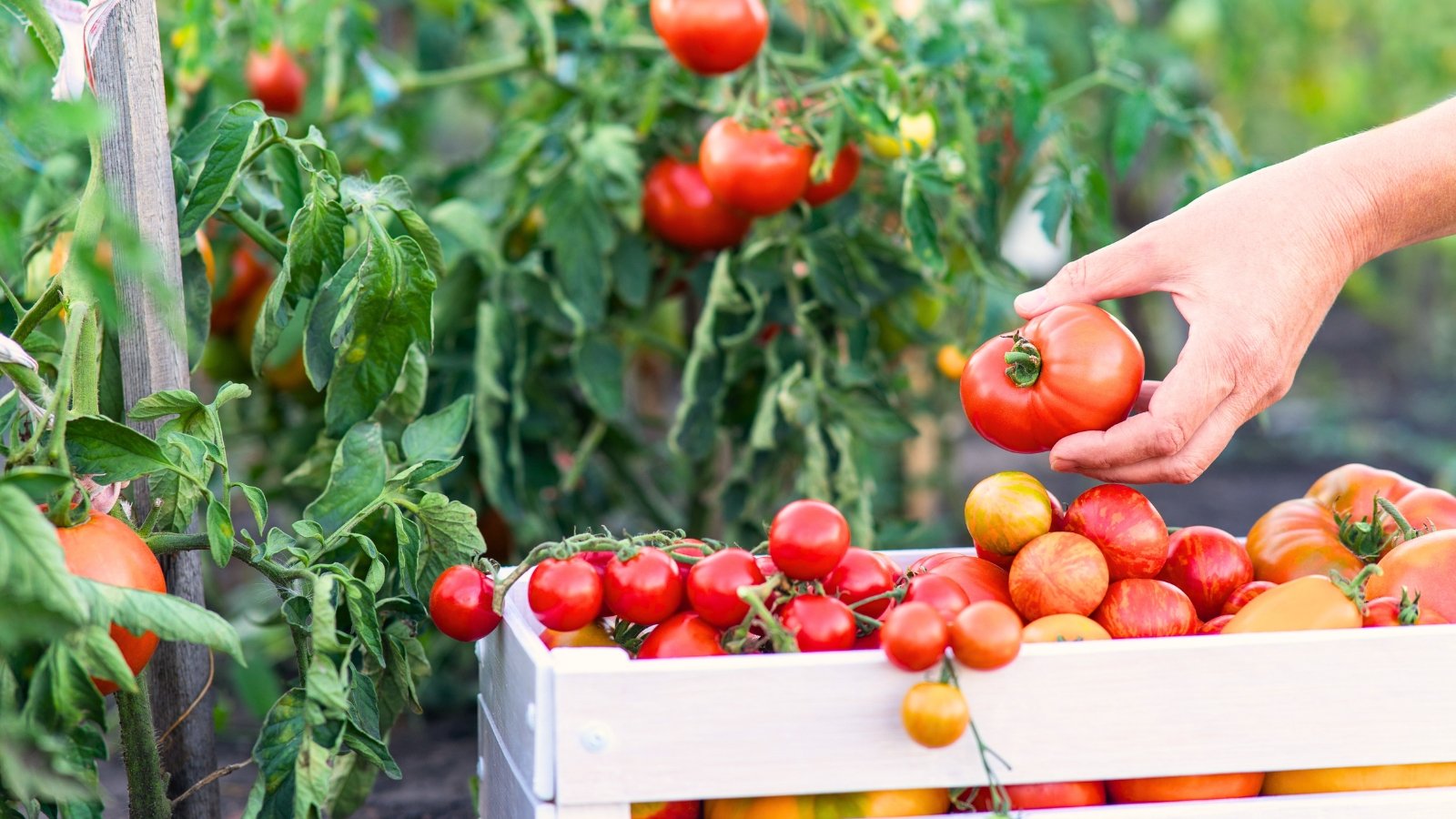 Early picking tricks the plant into producing more flowers.
Early picking tricks the plant into producing more flowers.Harvesting isn’t just a way to enjoy tomatoes. It also encourages more flowers and fruits to form. When you pick a tomato, you convince your plant that it’s losing seeds. To reproduce, the plant will grow more flowers and fruits in the hopes of producing more seeds.
When to harvest tomatoes depends on you and your taste preferences. Some growers like to leave them on the vine as long as possible, while others wait for the breaker stage. To harvest at the breaker stage, pick the tomatoes as soon as they’re 40-60% ripe, and let them ripen fully on a kitchen counter.
Once they’re ripe, store the fruits in your refrigerator for a week or two until you’re ready to eat them. The cold temperatures halt the ripening process, which allows you to eat the tomatoes on your own time.
Support Floppy Stems
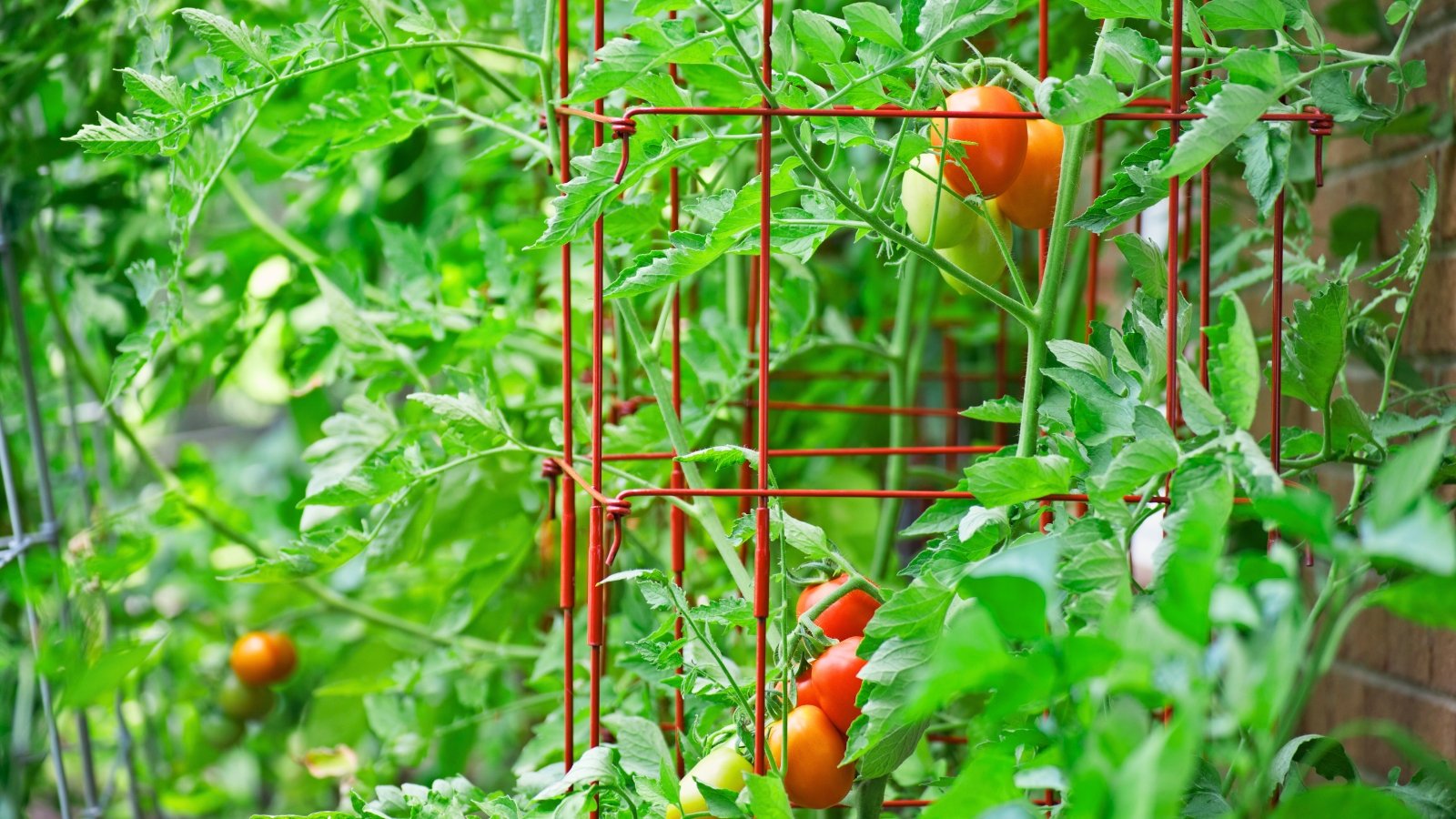 Staking helps keep sprawling vines off the ground.
Staking helps keep sprawling vines off the ground.There are two main types of tomatoes: indeterminate and determinate. Indeterminate, or pole tomatoes, grow indefinitely. They have long-reaching stems that require support to grow upward. You’ll see them flowering and fruiting from spring through fall.
Determinate, or bush tomatoes, produce their fruits all at once. They have low-growing bushy stems that may not need staking to grow well. Unlike pole types, they stop producing after their first fruiting period.
Whether you’re cultivating indeterminate or determinate tomatoes, part of August tomato care is ensuring tall plants have support. Tomato stems tend to grow tall, get heavy, and flop downwards. They’ll take up valuable planting space on the ground.
For support, use tomato cages, stakes, or trellises to keep the stems upright. Tie the vines to stakes with plant ties, or lean them in a way that they won’t fall.
Prune Dead or Diseased Leaves
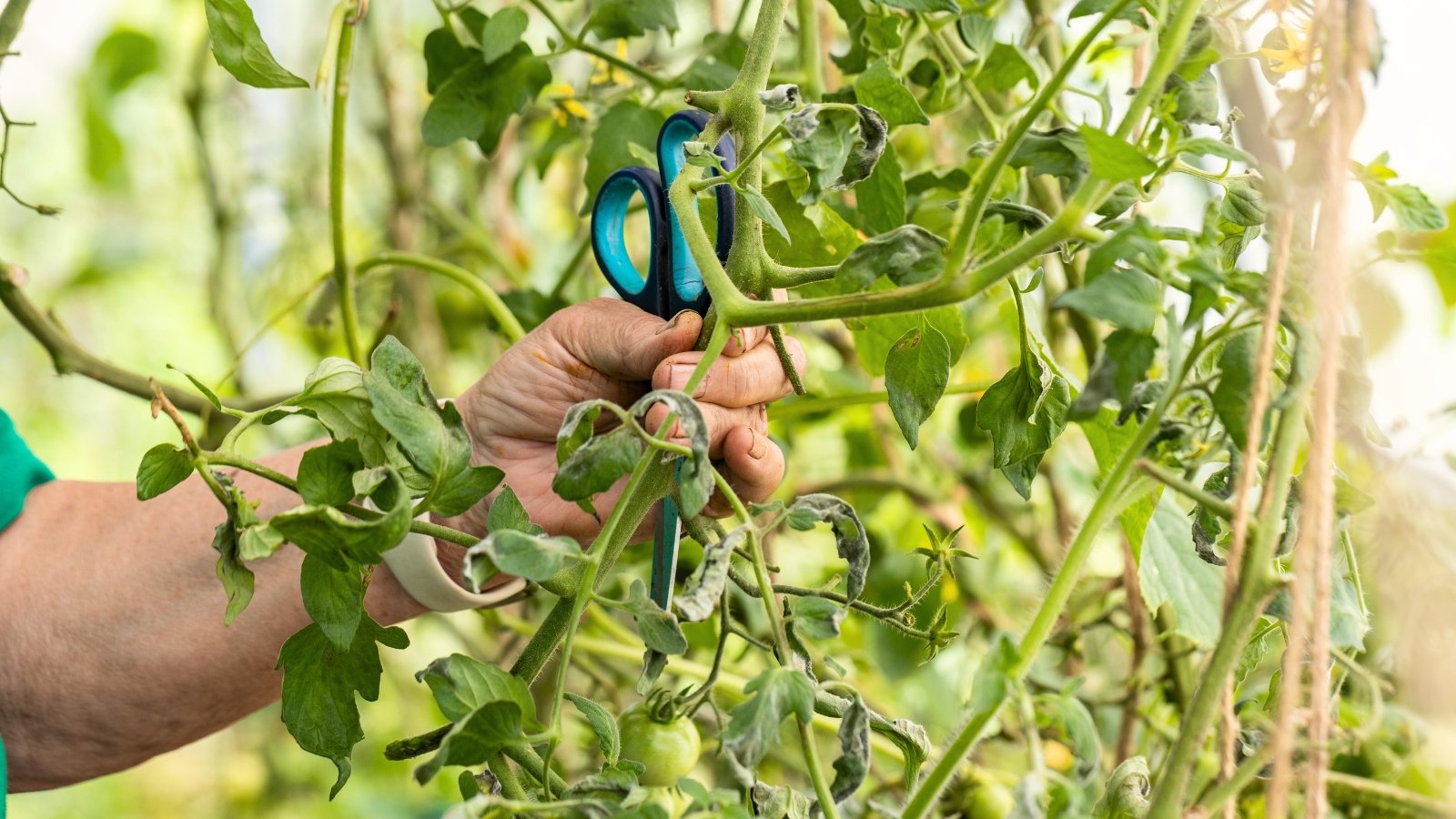 Snip damaged leaves to keep the plant healthy and happy.
Snip damaged leaves to keep the plant healthy and happy.Leaves take a beating during summer. High heat, dry weather, and strong winds cause damage like tears and rips. Pests or diseases may eat them, causing holes and mottling patterns to form.
Instead of letting diseases spread, prune off damaged or dead leaves as part of your August tomato care routine. Healthy new ones will sprout to replace the old ones. Whether they’re damaged from pests, weather, or diseases, snipping them off is the best way to manage them.
You may also want to remove bushy leaves if there are too many lying low to the ground. Dense foliage near the soil promotes diseases in August. A lack of airflow and splashing water can cause pathogens to jump from the ground onto your plants. To prevent this, keep a leaf-free base by pruning the lower stems.
Water Consistently
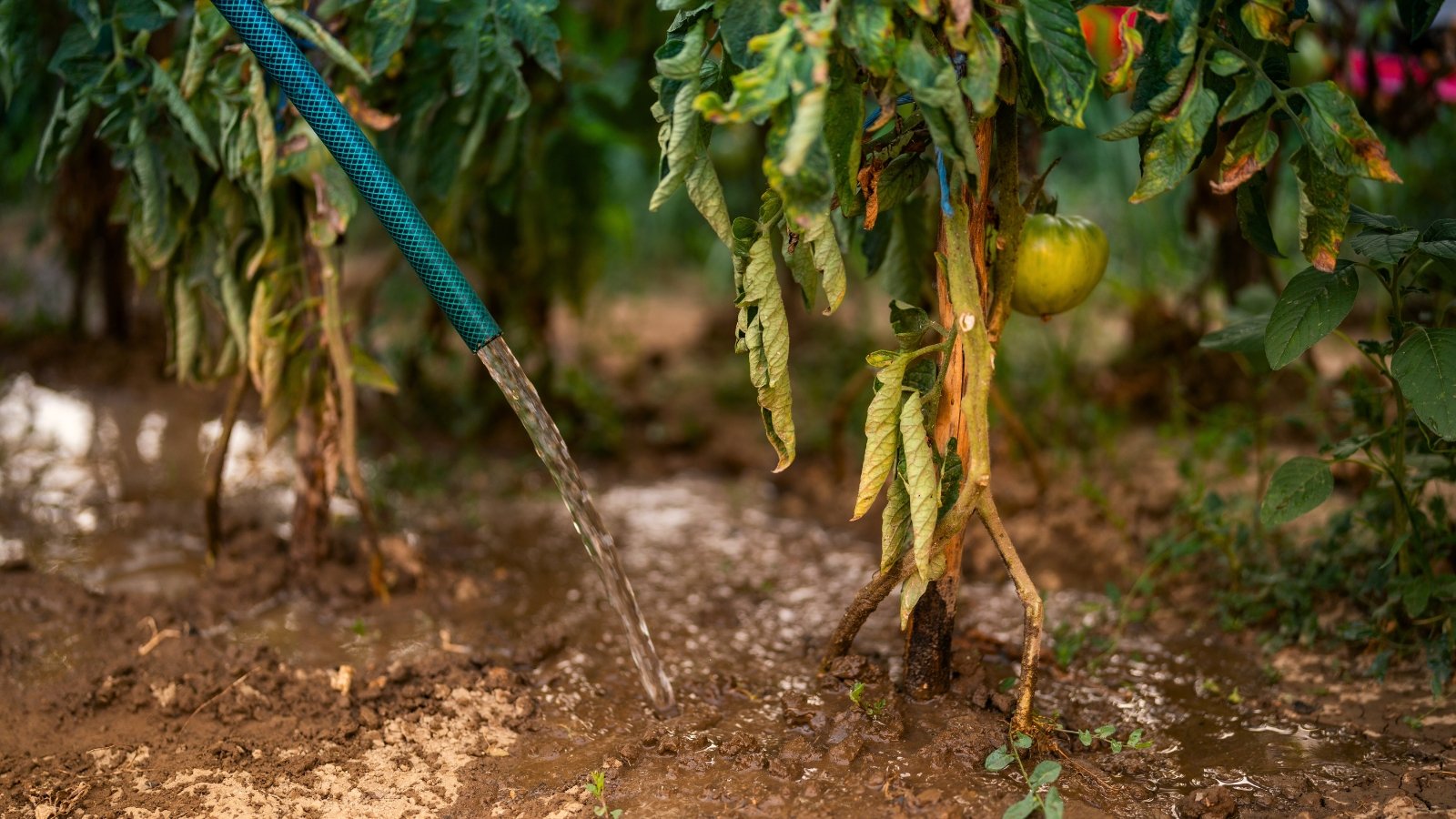 Too much or too little water causes fruit to split.
Too much or too little water causes fruit to split.Consistent watering is, by far, the most important task for August tomato care! A tomato consists of lots of water. Moisture is imperative for a healthy fruit to form.
Too much moisture and not enough both have devastating effects on tomato plants. Blossom end rot can occur after infrequent watering, as the plants struggle to use calcium when the soil is dry. Fruits split and crack if the plants receive too much water after a dry period.
For best fruit formation and plant health, water the tomato plot consistently throughout the growing season. Potted plants may need daily watering during hot weather, while in-ground and raised bed specimens benefit from several irrigation sessions a week.
The goal in August tomato care is to keep the dirt moist, but not soggy. If you’re unsure if the soil is moist underneath the surface, use your fingers! Simply stab a finger in the soil and pull it out. If moist dirt sticks to it, the ground is wet. It’s time to water the garden if dry dirt crumbles off your finger.
Fertilize, If Necessary
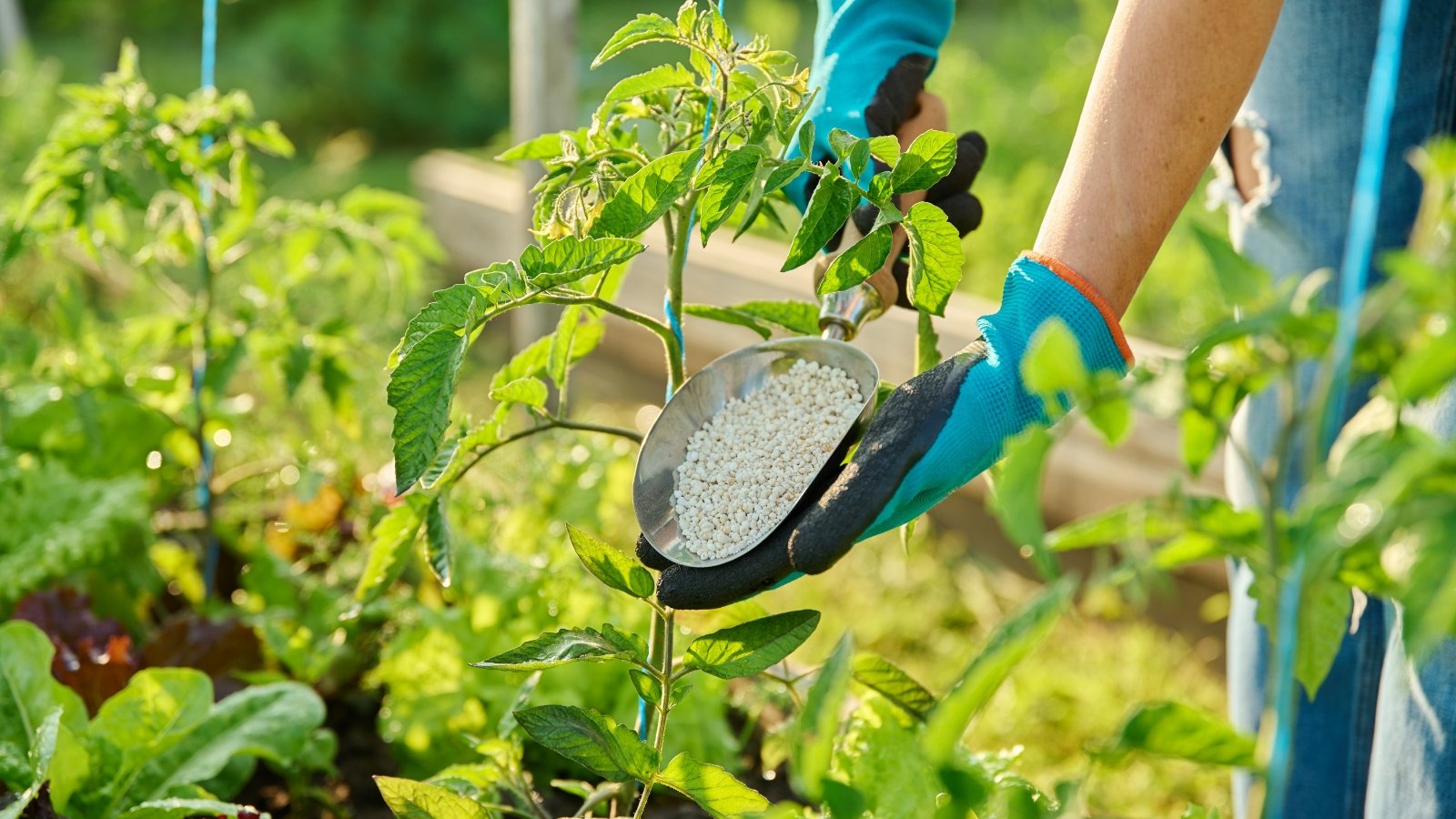 Balanced fertilizer feeds both leaves and developing fruits well.
Balanced fertilizer feeds both leaves and developing fruits well.Tomato vines need plenty of nutrients as they mature. They’re relatively heavy feeders, like peppers and corn. They need nitrogen for their leaves, and phosphorus and potassium for their blooms and tomatoes. Spring and early summer are perfect seasons for fertilizing tomatoes.
In August, nutrient-hungry tomato plants benefit from some extra fertilizer. You’ll notice small fruits, yellow leaves on the lower stems, and blossom drop on underfertilized tomatoes.
To fertilize, add a regular dose of organic fertilizer to the soil and water it well. Use a formula made for tomato crops, specifically at the flowering and fruiting stage.
Prevent Blossom End Rot
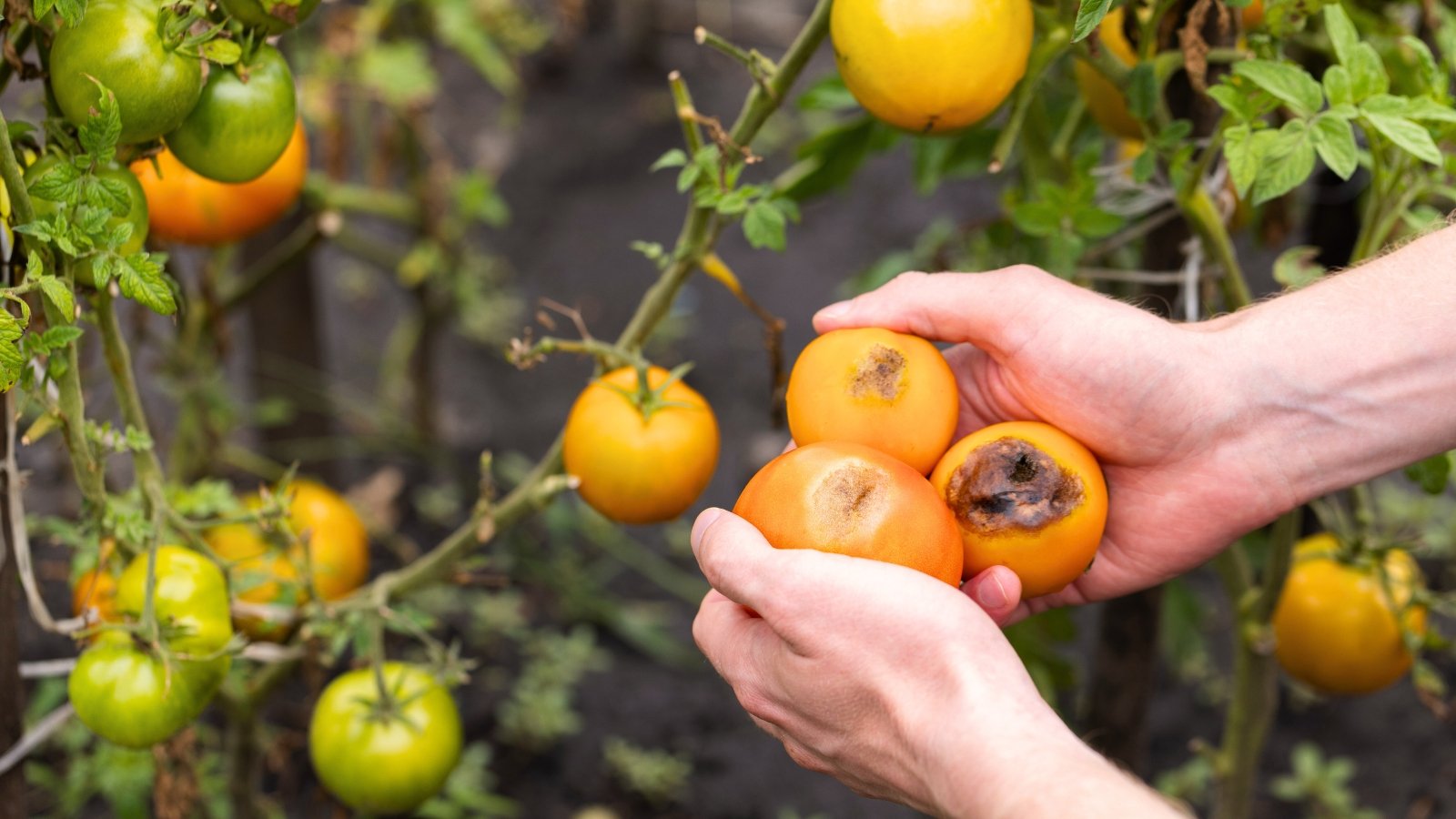 Dark patches start when moisture levels aren’t kept steady.
Dark patches start when moisture levels aren’t kept steady.Blossom end rot is a pesky condition that no gardener likes to see! Green tomatoes form, then black-brown spots form on their bottoms and slowly spread to the tops. A calcium deficiency is often the cause.
Though a lack of calcium leads to blossom end rot, calcium is only accessible to tomato plants when the soil is consistently moist. More often than not, a tomato has symptoms of end rot because of too little water or watering inconsistencies.
Before adding calcium to the soil, first ensure you water each tomato routinely as part of your August tomato care checklist. Don’t let any breaks occur. If you are watering consistently and still see symptoms of blossom rot, it may be a good idea to add a regular dose of calcium fertilizer.
Watch for Pests
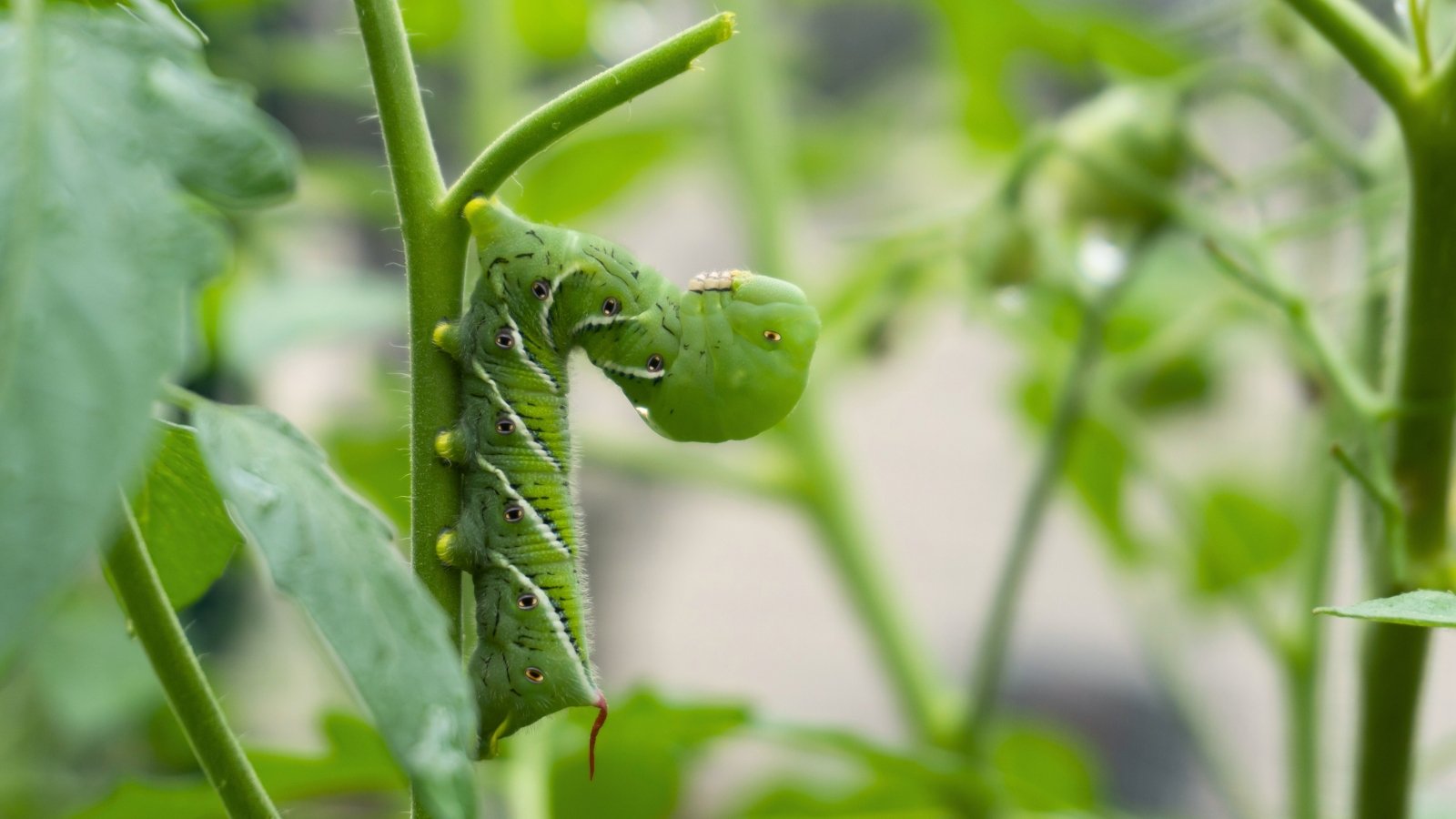 Handpick big pests before they make a serious mess.
Handpick big pests before they make a serious mess.The late summer garden is a perfect place for pests. Dying vegetation, moist soil, and warm temperatures create ripe conditions for pest activity. With a watchful eye and careful attention to detail, you can notice and prevent pests during your August tomato care before they cause significant issues.
Aphids, hornworms, and cutworms may infest the leaves and tomato fruits. Spray aphids and similar small insect pests with a hose daily until they disappear. Pick hornworms and cutworms off and throw them in a bucket of soapy water.
A healthy plant is resistant to infections and infestations. Keep your tomato crop well-watered, fertilized, and cared for throughout August. Proper care will keep pesky pests away at the end of the season.
Top Indeterminate Plants
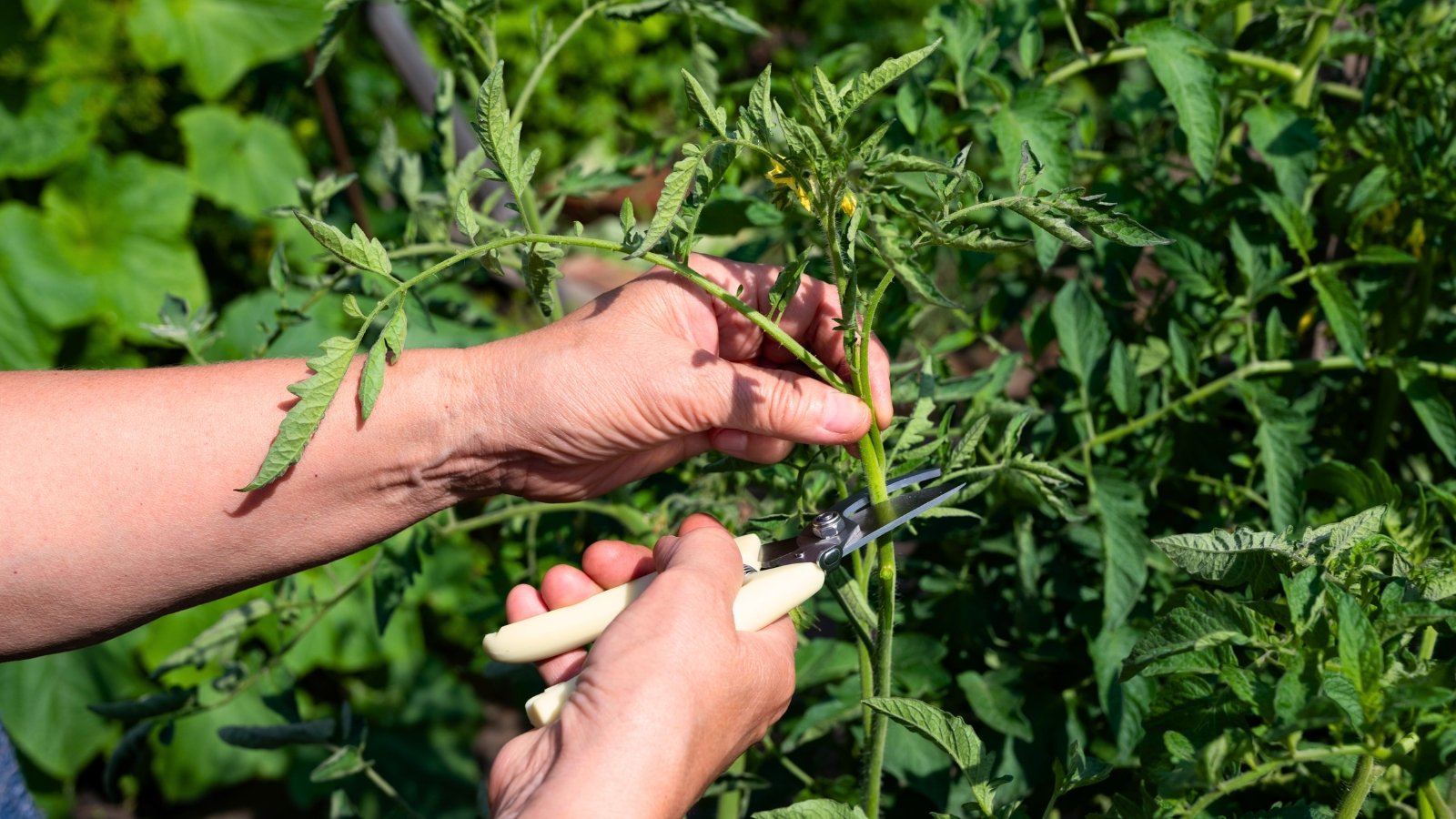 Removing extra shoots helps fruits mature before frost.
Removing extra shoots helps fruits mature before frost.As we covered earlier, indeterminate plants grow endlessly so long as temperatures are warm and sunlight is abundant. They’ll continue blooming and fruiting up until the first frost date in autumn. The flowers that form in August may not have time to turn into ripe tomatoes before the date.
To encourage quick ripening, you may top your indeterminate tomato vines during August tomato care. Topping is a harsh technique that chops unnecessary parts to redirect energy towards fruit formation and ripening.
To top a tomato plant, start by removing stems that grow above a ripening tomato. Chop them off, then remove any young flowers or small green tomatoes from the rest of the plant. With less top growth overall, the plant will have ample resources to direct towards its remaining tomatoes.
Save Seeds
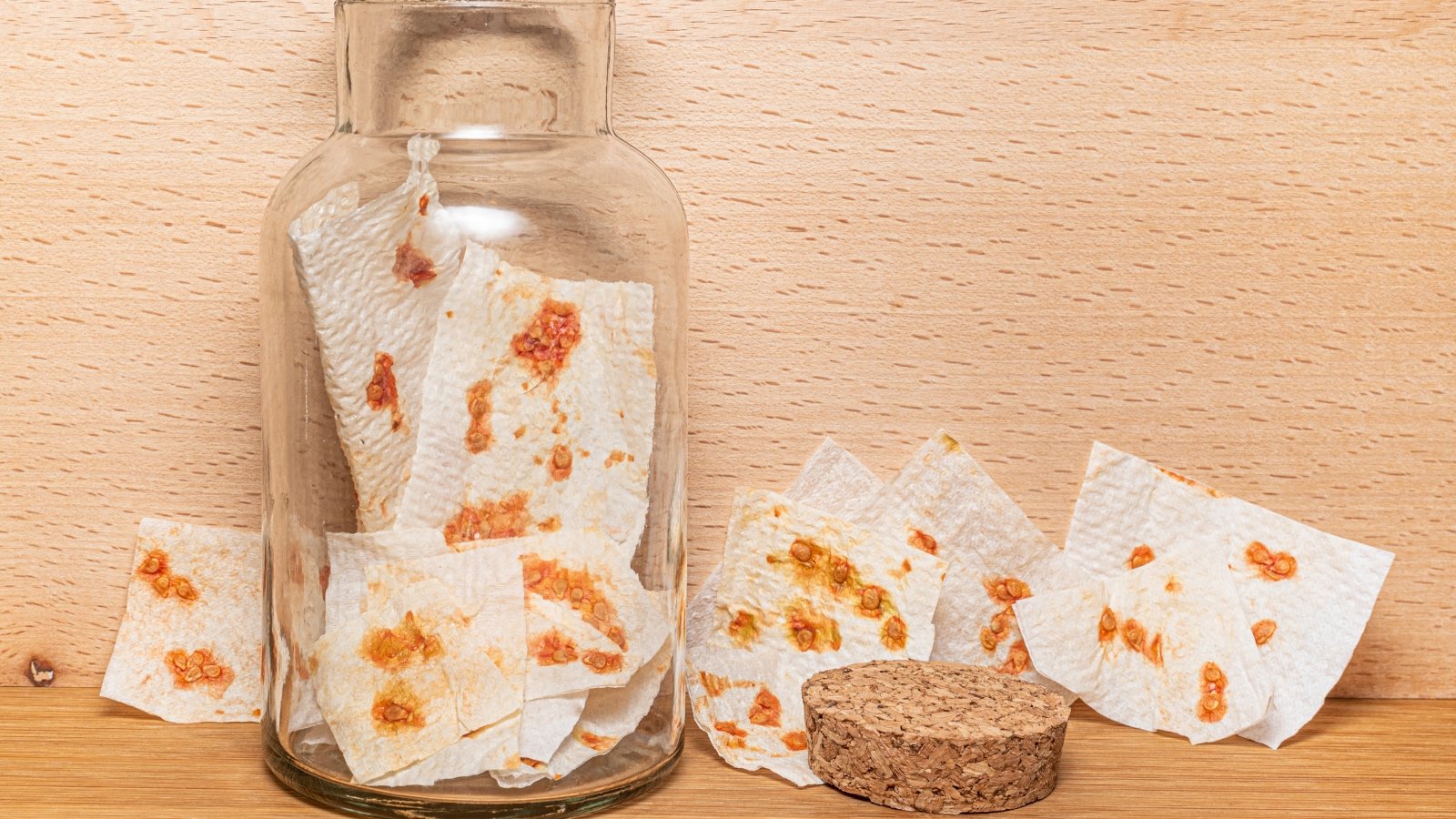 Saving seeds now sets up a stronger crop later.
Saving seeds now sets up a stronger crop later.Seed saving won’t help tomatoes now, but it will help you have a flourishing crop next year. It’s a great way to save money on seeds. You may also save seeds to create a climate-adapted tomato variety for your garden!
To save tomato seeds, first identify ripe fruits on healthy plants. Choose the best-looking tomatoes. Slice them open, scoop out their seeds, then let them sit in a glass of water for two to three days.
After a few days, a fermentation process occurs that removes the coating from tomato seeds. Strain the seeds, let them dry, then store them in a container in a cool, dark, and dry location until you’re ready for planting.


 19 hours ago
5
19 hours ago
5
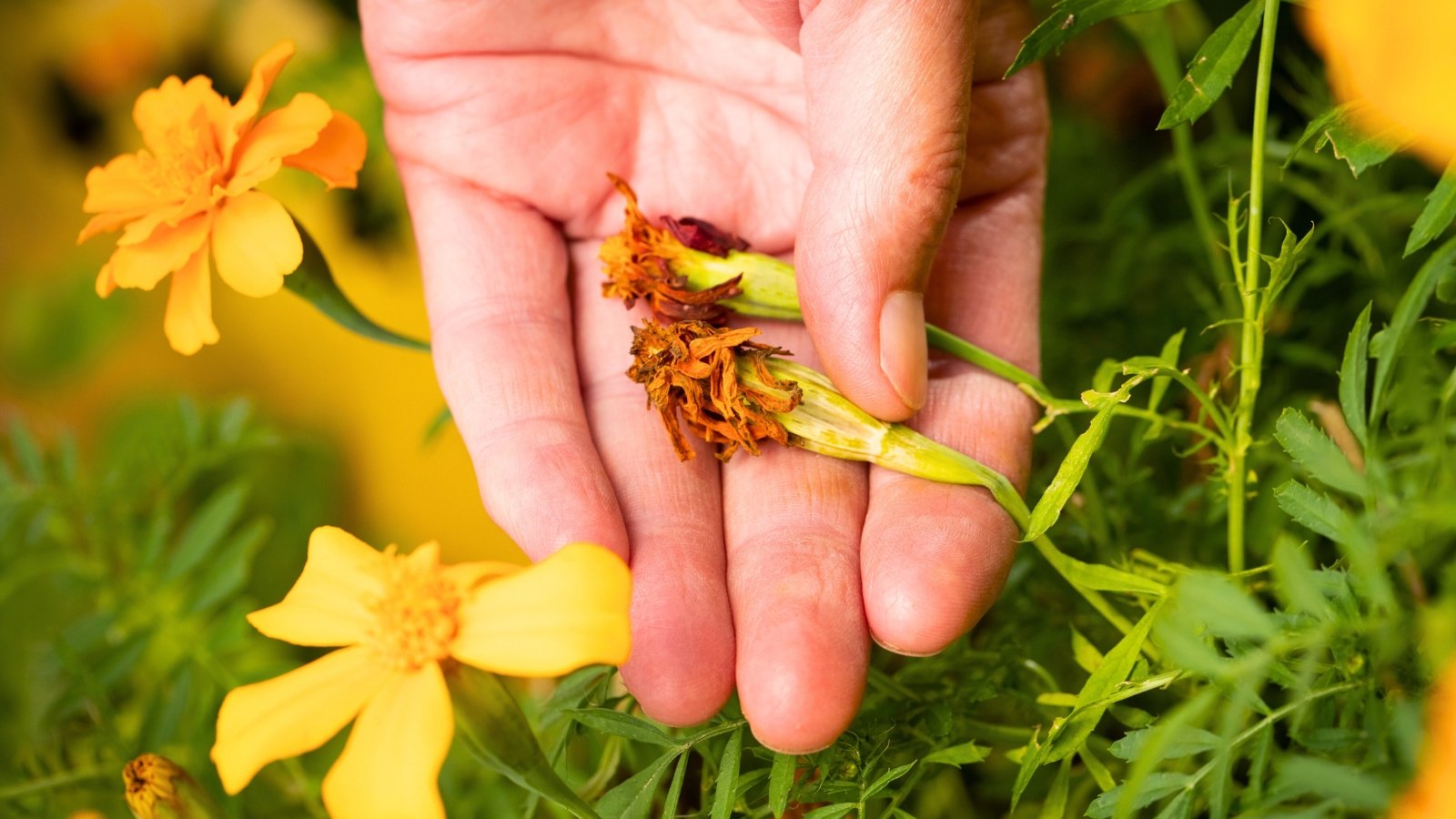
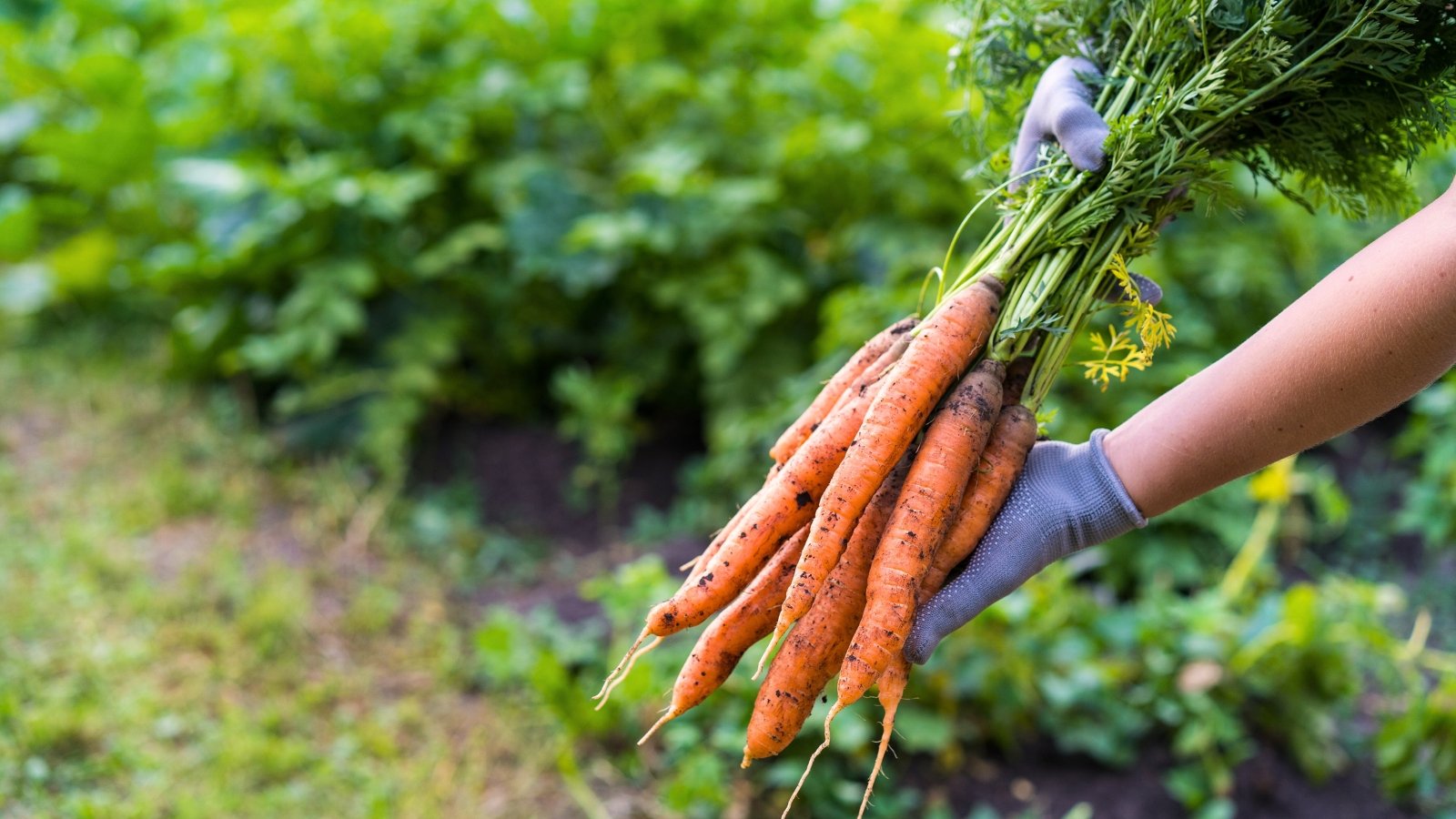


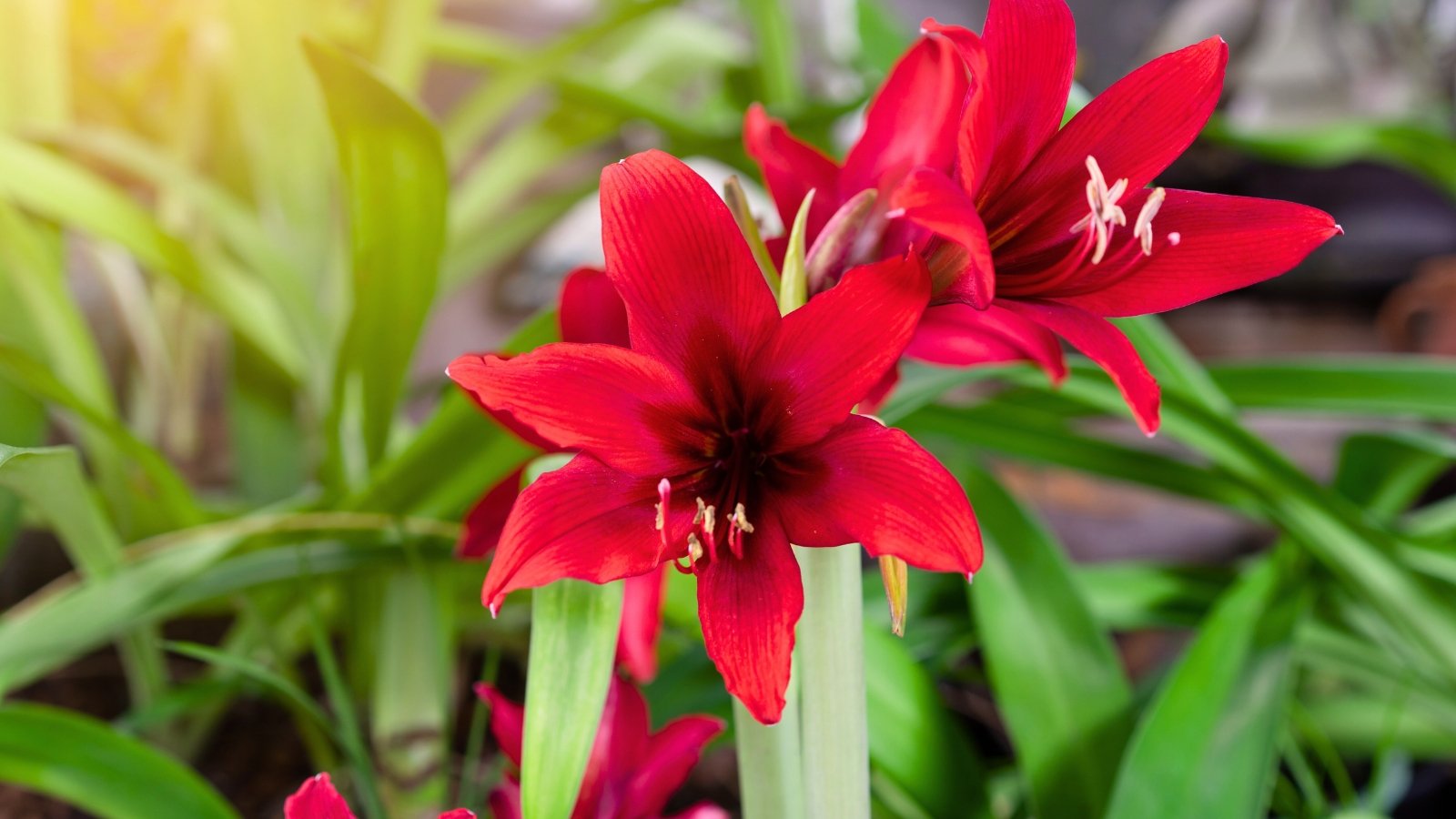
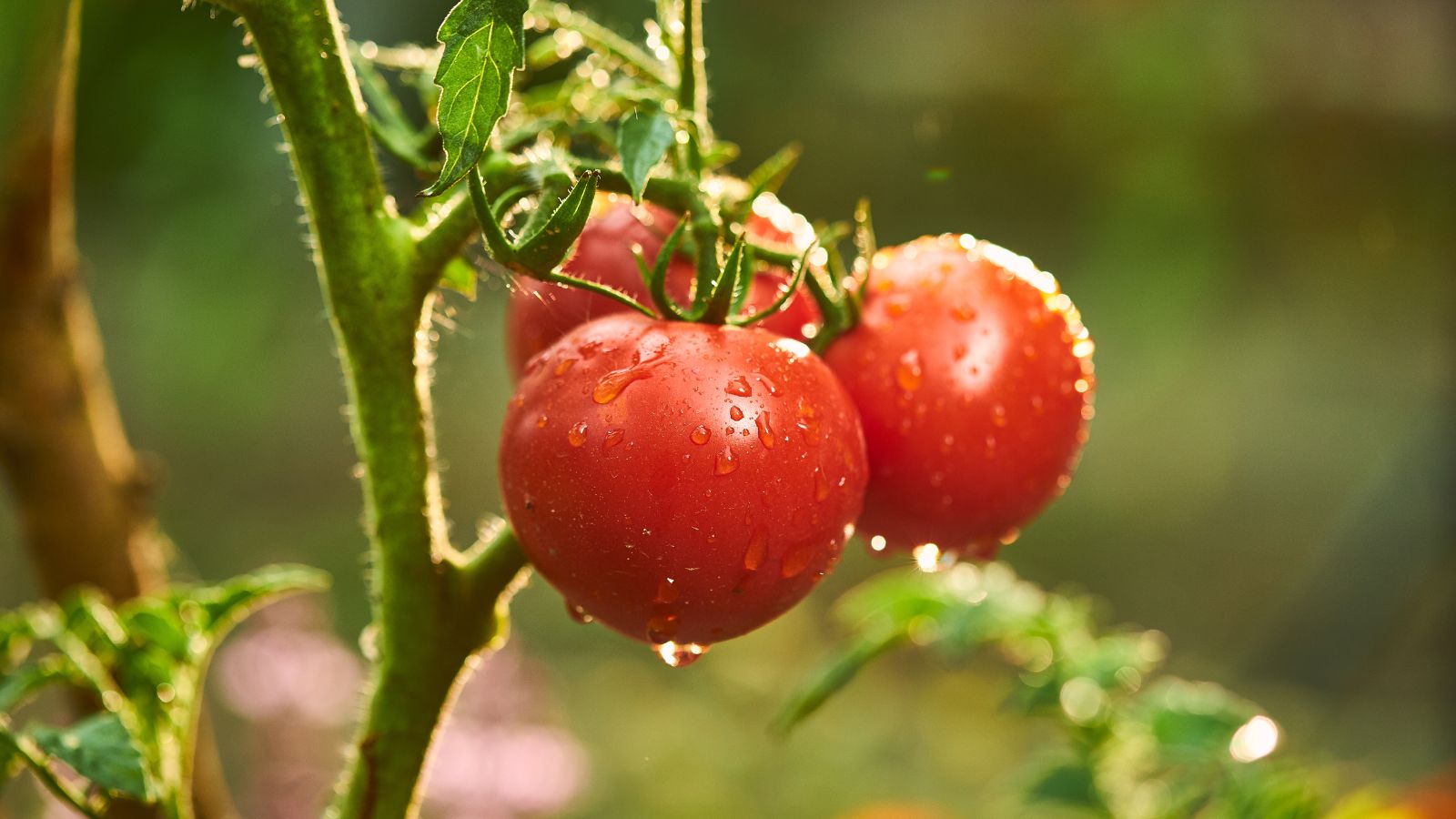















 English (US) ·
English (US) ·  French (CA) ·
French (CA) ·